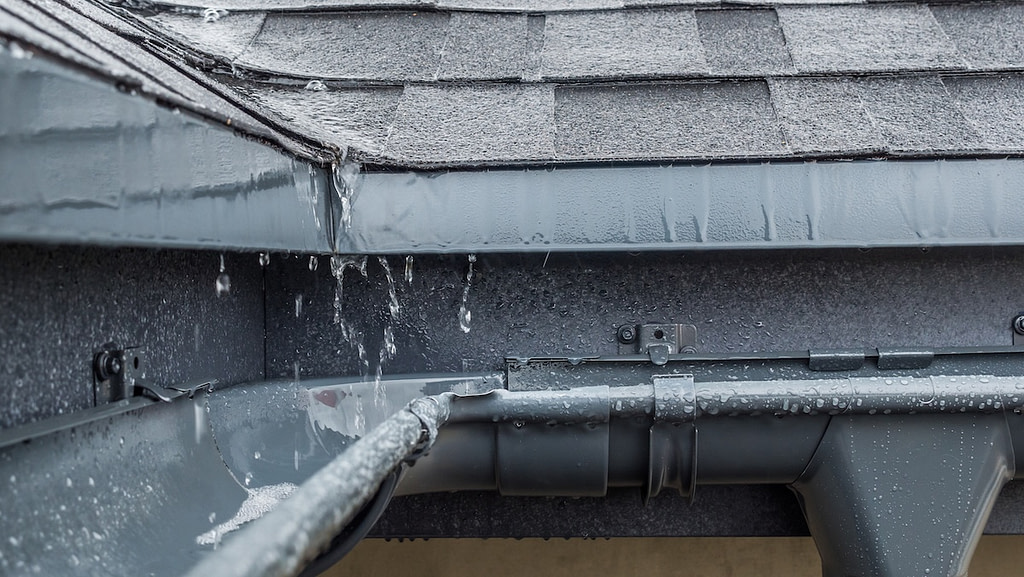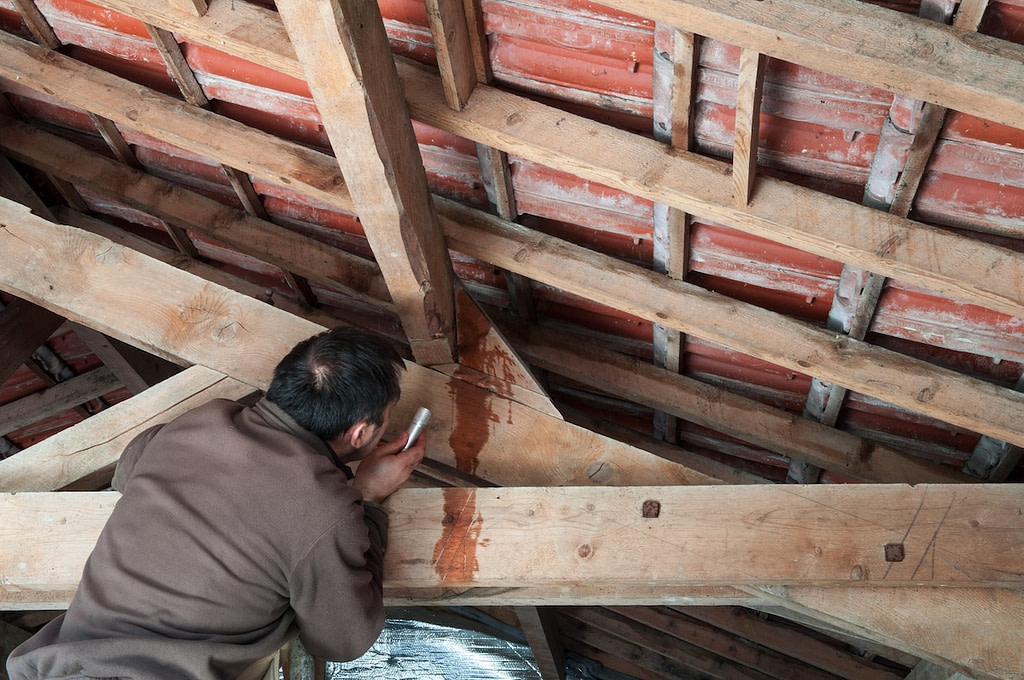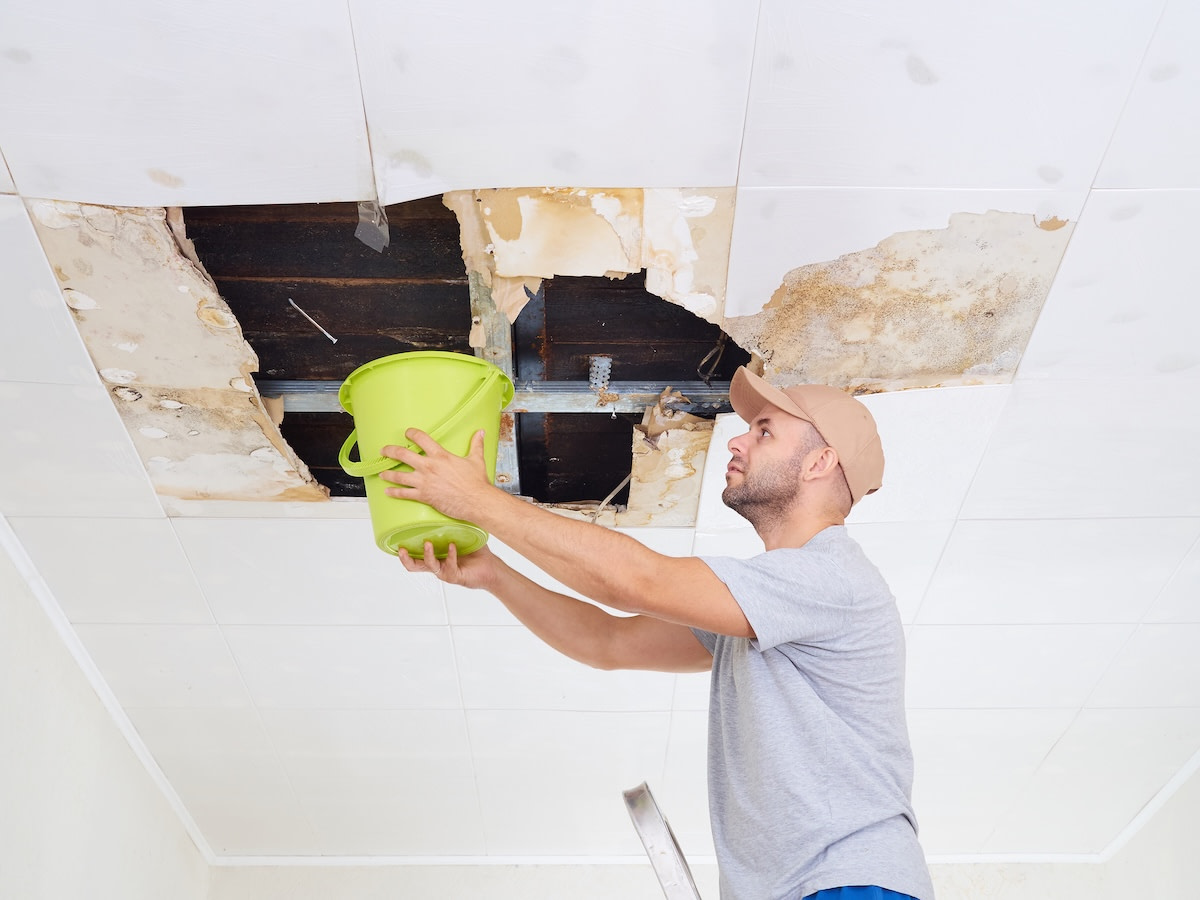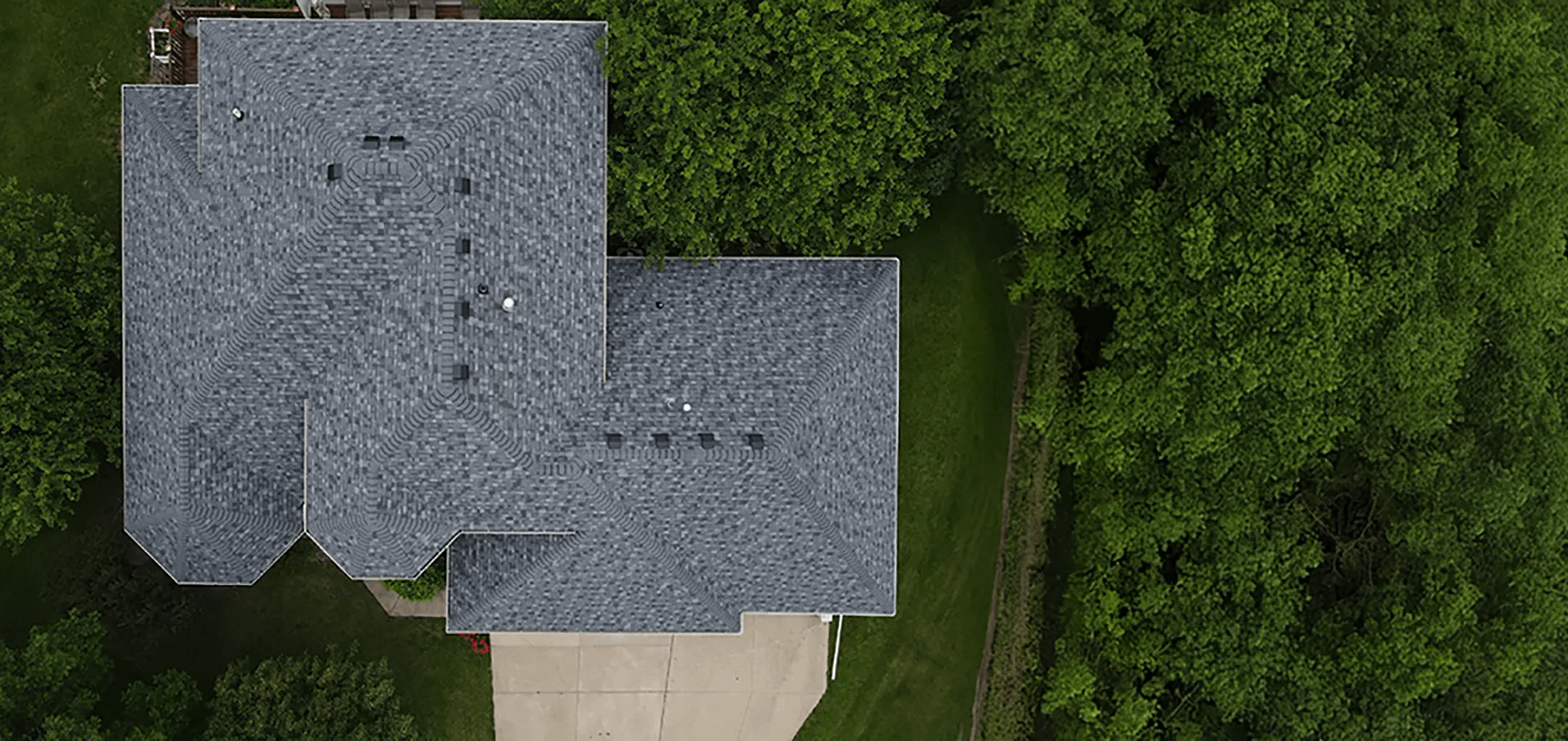A leaky roof can be a homeowner’s nightmare. Left unaddressed, even a small leak can lead to costly repairs, water damage, and structural issues. For those with limited experience dealing with roofing problems, the thought of finding the source of the leak can feel overwhelming. That’s where this guide comes in. We’re here to help with a step-by-step breakdown of how to find a roof leak and address it before it causes major problems.
Key Takeaways:
- Spot the signs early: Learn how to recognize water stains, ceiling discoloration, musty odors, and other indicators of roof leaks.
- Understand what causes leaks: From damaged flashing to clogged gutters, we break down the most common culprits.
- Use the right tools: Get a simple list of tools that make leak detection easier, even for beginners.
- Follow a step-by-step process: We guide you through checking your attic, inspecting your roof, and isolating the source of the leak.
- Prevent future problems: Discover proactive maintenance tips to protect your roof and avoid costly repairs down the road.
By the end of this blog, you’ll have a clear understanding of how to identify and manage roof leaks effectively.
5 Signs You May Have a Roof Leak
Before you can find the source of a leak, you need to know what to look for. Here are some common warning signs that indicate a problem with your roof:

1. Visible water stains
One of the most apparent signs of a roof leak is water stains on your ceiling or interior walls. Look for discolored patches, bubbling paint, or sagging areas that suggest water intrusion.
2. Dripping water
If you notice water actively dripping from your ceiling during or after a rainstorm, it’s a clear indicator of a leaky roof.
3. Mold or mildew growth
Persistent moisture from a leak can lead to mold or mildew forming on walls, ceilings, or attic spaces. This can also cause an unpleasant odor in your home.
4. Warped or damaged shingles
Keep an eye on your roof’s exterior. Damaged shingles, such as those that are cracked, curling, or missing, are a major clue that water may be seeping through.
5. Peeling paint or wallpaper
Excess moisture caused by leaks can lead to peeling paint on exterior walls or wallpaper damage indoors.
If you notice any of these signs, it’s time to take action and locate the cause of the problem.
Common Causes of Roof Leaks
Understanding the potential reasons for leaks makes it easier to narrow down the source. Here are some of the most frequent culprits behind roof leaks:

- Damaged shingles: Severe weather, such as high winds or hail, can break or dislodge shingles, exposing the underlying materials to water.
- Cracked flashing: Flashing (thin metal strips installed around roof intersections, chimneys, and vents) can crack or corrode over time, leading to a vulnerable roof.
- Clogged gutters: When gutters become obstructed by leaves or debris, water can pool and seep into your roof instead of draining properly.
- Poorly sealed roof vents: Roof vents often feature rubber seals that can deteriorate, allowing water to enter.
- Ice dams: During winter, ice dams can form on your roof’s edges, trapping melting snow and causing it to back up under shingles.
By knowing what might be causing the leak, you’re one step closer to finding and resolving the issue.
Tools You’ll Need to Find a Roof Leak
Before you learn how to find a roof leak, gather the following tools to help identify the source of the issue effectively:
- Flashlight (preferably waterproof)
- Tape measure
- Ladder
- Marking tools (chalk or small tape pieces)
- Garden hose (for water testing)
- Roofing caulk or sealant (for minor fixes)
- Binoculars (for inspecting hard-to-reach areas)
Always prioritize safety when climbing onto your roof or working at heights. Consider having a partner assist you, and wear non-slip shoes.
How to Find a Roof Leak? 6 Step Guide

Step 1. Check your attic
Start by inspecting your attic for signs of water damage, including wet spots, discoloration, or streaks. Use a flashlight to identify areas that appear damp or moldy.
Step 2. Look for water stains indoors
Trace the path of any visible water stains from your interior walls or ceiling. These spots often point to the leak’s source, making it easier to investigate the roof directly above.
Step 3. Inspect your roof’s exterior
Climb onto the roof and examine the surface for damaged shingles, punctures, or debris buildup. Pay special attention to chimneys, vents, and areas with flashing.
Step 4. Test for leaks with water
Using a garden hose, spray water on specific sections of your roof while another person monitors the indoor spaces for any signs of dripping water. This method can help pinpoint the exact location of the leak.
Step 5. Check your gutters
Ensure your gutters and downspouts are free of debris. Blocked gutters can cause water to overflow and infiltrate your roof’s vulnerable areas.
Step 6. Mark the leak’s location
Once the leak is identified, mark the spot with chalk or tape to revisit it later for repairs. This will also help if professional assistance is needed.
Remember, not all roof leaks are visible or immediately obvious. If you’re unable to locate the source or feel uncertain about the process, it’s best to call an experienced roofing professional.
Preventive Measures to Avoid Roof Leaks
Preventing a leaky roof is always better than fixing one. Here are some tips to keep your roof in peak condition:
- Schedule regular roof inspections: Hire professionals to inspect your roof at least once a year for potential problems.
- Keep gutters clean: Regularly clean out your gutters to prevent debris from causing blockages and water overflow.
- Trim overhanging branches: Large trees near your home can pose a risk of falling debris or excessive wear on your roof.
- Address small issues promptly: Don’t ignore minor roof damage; repair cracks, damaged shingles, and flashing before they escalate.
By taking these steps, you can extend the lifespan of your roof while safeguarding your home from unexpected leaks.
Why Choose Young Construction for Your Roofing Needs?
At Young Construction, we understand how daunting it can be to deal with roof leaks—but you don’t have to handle it alone. With years of industry experience, our skilled team offers top-quality roofing services, from inspections and repairs to complete roof replacements.
Here’s why homeowners trust us to protect their homes against roof leaks and other issues:
- Expert Solutions: We specialize in diagnosing and repairing even the trickiest roofing problems.
- High-Quality Materials: We use durable, reliable materials that stand up to the harshest elements.
- Customer-Centered Service: Your satisfaction is our top priority. We ensure transparent communication and a hassle-free experience every step of the way.
- Preventive Maintenance Plans: Stay proactive with our maintenance plans, designed to keep your roof in tip-top shape all year.
Don’t wait until a roof leak becomes a bigger problem. Contact us today to schedule your free roof inspection or consultation.
Protect your home, save money, and gain peace of mind knowing that your roof is in expert hands. Thank you for choosing Young Construction—where your home’s safety is our mission.
Why is my roof leaking if I can’t find the source?
A roof may leak even when the source isn’t immediately visible because water can travel from the entry point before appearing inside your home. It may enter through damaged flashing, cracked shingles, or improperly sealed vents, then follow rafters or drywall before dripping. Inspect the attic and roof carefully using our guide on how to find a roof leak to trace the hidden source.
What are the most common places where roof leaks start?
Leaks often begin around chimneys, roof vents, valleys, flashing, or near skylights. Damaged or missing shingles are also common sources. These areas should be the first places you inspect when learning how to find a roof leak.
When should I call a professional instead of trying to find the roof leak myself?
If the leak is severe, near electrical components, or you’re uncomfortable climbing onto the roof, it’s best to contact a licensed roofing contractor. DIY inspection is helpful, but safety comes first.
Can a roof leak cause mold or health issues?
Yes, persistent leaks can lead to mold growth, which poses health risks, especially for people with allergies or asthma. Acting quickly to locate the leak is crucial.

